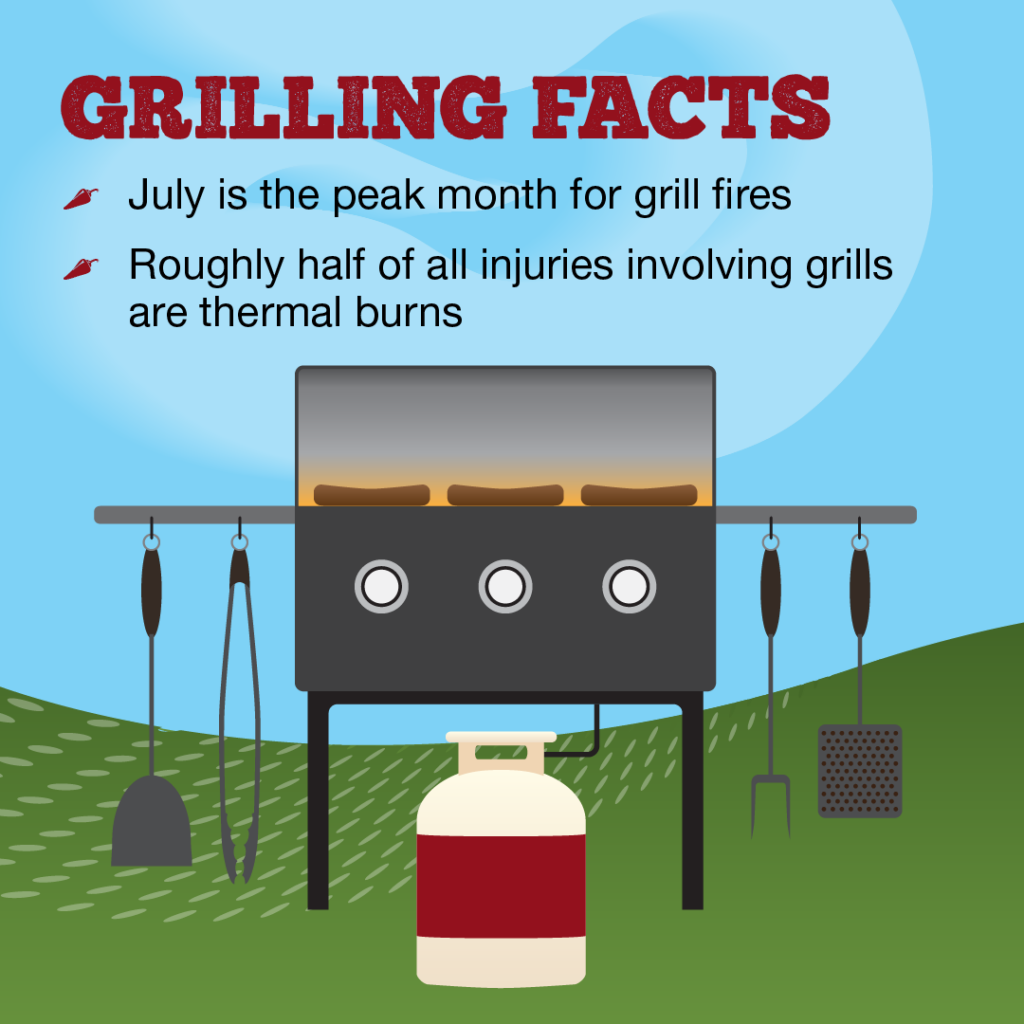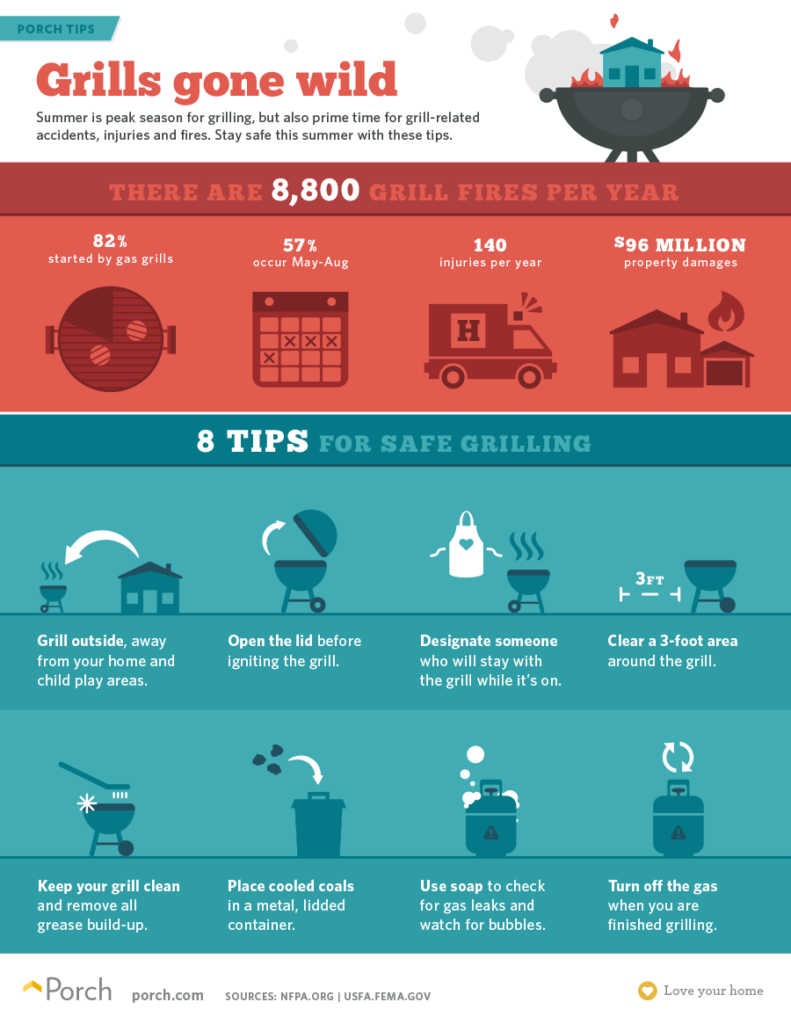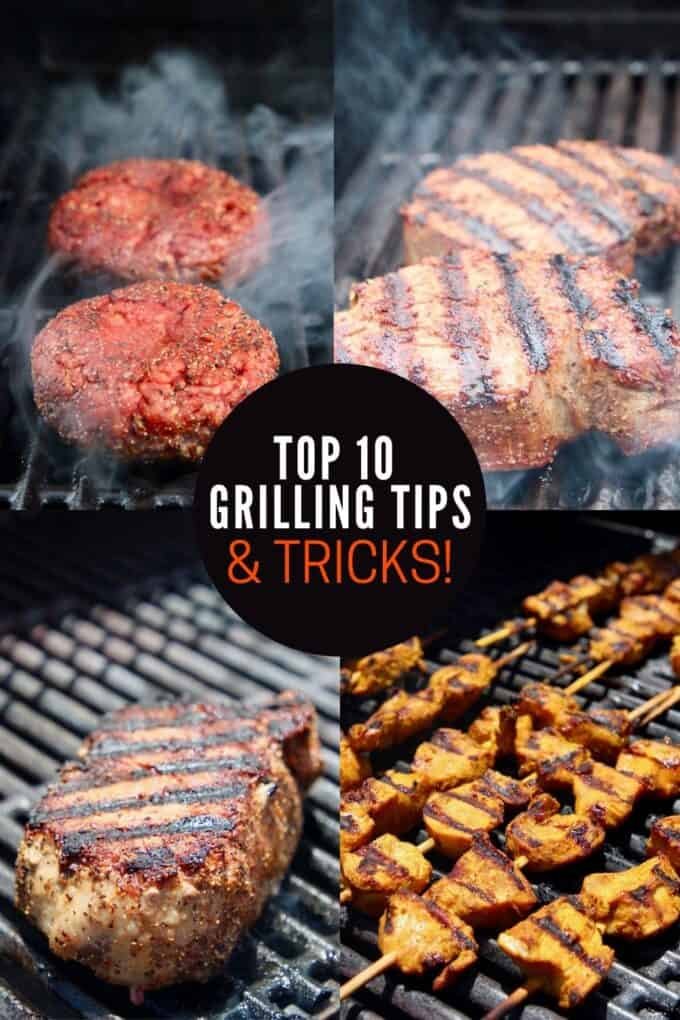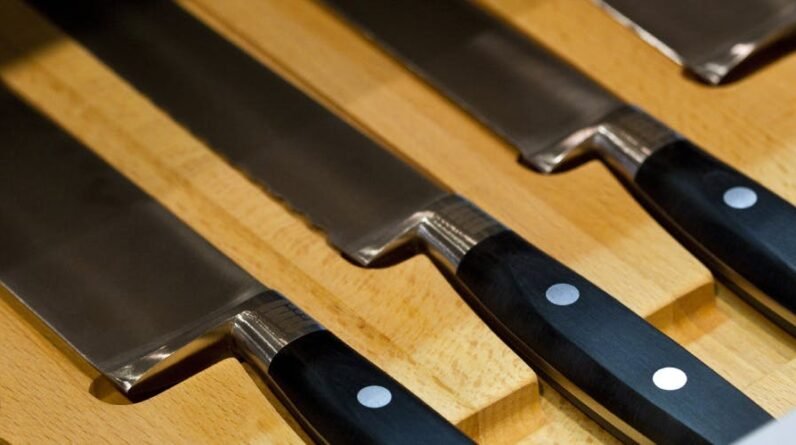
Are you a beginner when it comes to outdoor grilling? Well, fret not because we’ve got you covered! In this article, we’ll provide you with some invaluable tips to help you become a grilling pro in no time. From choosing the right grill to mastering the art of marinades, we’ll walk you through everything you need to know to make your outdoor grilling experiences a sizzling success. So grab your apron and get ready to impress your friends and family with your newfound grilling skills!

Choosing the Right Grill
When it comes to outdoor grilling, choosing the right grill is essential. There are various factors to consider to ensure you get the grill that suits your needs perfectly.
Consider the Type of Grill
The first step in choosing the right grill is deciding on the type that best fits your grilling preferences. The most common types of grills are charcoal, gas, and electric grills. Each type has its own advantages and disadvantages.
If you enjoy the rich, smoky flavor that charcoal grills offer and don’t mind the longer preheating time, a charcoal grill might be the perfect choice for you. Gas grills, on the other hand, provide instant heat and are more convenient to use. Electric grills are a great option for those who live in apartments or areas where open flame grilling is prohibited.
Choose the Right Size
Grill sizes vary depending on how much space you have available and how many people you typically cook for. If you have a small patio or balcony, a compact grill would be more suitable. However, if you frequently entertain guests or have a large family, a larger grill with multiple burners or a spacious cooking area would be ideal.
Decide on Fuel Type
As mentioned earlier, the fuel type plays a crucial role in determining the flavor and convenience of your grilling experience. If you opt for a gas grill, you’ll need a propane tank or a natural gas line. Charcoal grills require briquettes or lump charcoal, while electric grills need to be plugged into an electrical outlet.
Consider factors such as availability, cost, and ease of use when deciding on the fuel type for your grill.
Consider the Cooking Surface
When it comes to the cooking surface of a grill, you have options such as stainless steel grates, cast iron grates, or even ceramic grates. Stainless steel grates are durable, easy to clean, and provide even heat distribution. Cast iron grates, although heavier and require more maintenance, retain heat exceptionally well and produce beautiful sear marks. Ceramic grates are known for their excellent heat retention and even cooking but may require more attention to prevent food from sticking.
Consider your cooking preferences and the maintenance level you’re comfortable with when choosing the cooking surface for your grill.
Think About Mobility
If you plan on taking your grill on camping trips, tailgating events, or simply want the flexibility to move it around your backyard, consider the mobility of the grill you choose. Look for features such as wheels, handles, or a compact design that allows for easy transportation.
Essential Grilling Equipment
To make your grilling experience smoother and more enjoyable, there are a few essential grilling tools you’ll want to have on hand.
Grill Brush
A grill brush is a must-have tool for any griller. It helps to remove food debris and grease from the grates, ensuring that your grill stays clean and ready for the next use. Look for a sturdy brush with bristles that won’t easily break or shed.
Tongs
Tongs are essential for flipping and turning food on the grill. Invest in a pair of long tongs with a good grip that allows you to handle food with precision and keep your hands safely away from the heat.
Spatula
A spatula is necessary for flipping delicate items such as fish fillets or burgers. Look for a spatula with a thin, flexible blade that slides easily under the food without causing it to break apart.
Grilling Gloves
Grilling gloves are a great investment for protecting your hands and arms from the heat of the grill. Look for gloves that are heat-resistant and provide a good grip to handle hot pots, pans, and grilling accessories.
Meat Thermometer
To ensure your meat is cooked to perfection and safe to eat, a meat thermometer is a must-have tool. Look for a digital thermometer with quick and accurate readings to help you achieve the desired level of doneness.

Preparation and Safety
Before you start grilling, there are important preparation and safety measures to keep in mind.
Location and Clearance
Choose a suitable location for your grill. Make sure it’s placed on a flat, non-flammable surface and has enough clearance from any structures, trees, or overhanging branches. This helps prevent accidents and ensures proper ventilation.
Check for Gas Leaks
If you’re using a gas grill, it’s crucial to regularly check for gas leaks. Apply a solution of soapy water to the connections and hoses, and if you observe any bubbles, it indicates a gas leak. Address the issue before using the grill to prevent potential hazards.
Proper Handling of Charcoal
When using a charcoal grill, follow proper safety measures when handling charcoal. Never add lighter fluid to hot coals and make sure the coals are completely extinguished before disposing of them. Keep a bucket of water or a fire extinguisher nearby in case of emergencies.
Keep a Fire Extinguisher Nearby
Having a fire extinguisher within reach is a vital safety precaution when grilling. Accidents can happen, so it’s important to be prepared. Make sure you know how to use the fire extinguisher properly and have it readily available in case of a fire.
Maintain a Clean Grill
Regularly cleaning your grill not only ensures food safety but also extends the life of your grill. Clean the grates, remove grease buildup, and keep the firebox or burners clear of debris to prevent flare-ups. A clean grill is a safe grill.
Understanding Direct and Indirect Heat
When it comes to grilling, understanding the difference between direct and indirect heat is key to achieving the desired cooking results.
Direct Heat Grilling
Direct heat grilling involves placing the food directly over the heat source. This cooking method is ideal for thinner cuts of meat, vegetables, or any food item that requires quick cooking. The high heat creates a sear on the food, sealing in juices and creating a delicious crust.
Indirect Heat Grilling
Indirect heat grilling involves placing the food away from the heat source, allowing for slower and gentler cooking. This method is perfect for thicker cuts of meat, such as roasts or whole chickens, as it provides even cooking throughout without burning the exterior.
Combination Cooking
Combination cooking involves using both direct and indirect heat during the grilling process. This is useful when you want to sear your food quickly over direct heat and then finish cooking it slowly with indirect heat. It offers the best of both worlds and allows for more versatile cooking options.

Marinating and Seasoning
Marinating and seasoning are essential steps in enhancing the flavor of your grilled dishes.
Benefits of Marinating
Marinating meat or vegetables before grilling not only adds flavor but also helps tenderize the food. The marinade can penetrate the surface and infuse the ingredients with a delicious blend of herbs, spices, and other seasonings.
Basic Marinade Recipe
A simple marinade can be made by combining ingredients such as olive oil, vinegar or citrus juice, garlic, herbs, and spices. You can experiment with different flavor profiles to suit your taste preferences. Marinate your food in the refrigerator for at least 30 minutes (or longer for tougher cuts of meat) to allow the flavors to develop.
Dry Rubs and Seasonings
Dry rubs can add a burst of flavor to your grilled meats without the need for marinating. You can purchase pre-made rubs or create your own by combining spices, herbs, salt, and sugar. Rub the mixture onto the meat before grilling to add a tasty crust.
How to Use Marinades and Seasonings
When using marinades, make sure to remove any excess liquid from the surface of the meat before grilling to avoid flare-ups. Seasonings, such as dry rubs, can be applied directly to the meat or vegetables, allowing the flavors to intensify during the cooking process.
Grilling Techniques
To become a master griller, you’ll want to know some essential grilling techniques.
Preheating the Grill
Preheating the grill is crucial to ensure even cooking. Depending on your grill type, preheat it for around 10-15 minutes before placing your food on the grates. This helps to kill bacteria, sear the meat, and prevent sticking.
Oil the Grates
To prevent your food from sticking to the grates, brush the grates with oil before placing the food on them. Use a brush or a folded piece of paper towel dipped in oil to quickly and evenly coat the grates.
Maintaining the Right Temperature
Maintaining the right temperature is essential for successful grilling. Gas grills usually have temperature control knobs, while charcoal grills require adjusting the airflow to control the heat. Keep an eye on the temperature throughout the cooking process to ensure your food cooks evenly and to prevent burning.
Proper Grill Ventilation
For charcoal grills, proper ventilation is crucial to maintain a consistent heat level. Adjust the vents on the top and bottom of the grill to control the oxygen flow and regulate the temperature. More oxygen means a hotter fire, while less oxygen reduces the heat.
Grilling with the Lid Open or Closed
Grilling with the lid open or closed depends on the type of food you’re grilling. Leaving the lid open is ideal for quick-cooking foods that require direct heat, such as burgers or vegetables. Closing the lid creates an oven-like environment, perfect for roasting larger cuts of meat or items that benefit from indirect heat, like whole chickens.

Cooking Different Types of Meat
Grilling offers a wide range of delicious options when it comes to cooking different types of meat.
Steak
To grill a perfect steak, start by seasoning it with salt and pepper or your favorite dry rub. Preheat the grill to high heat and sear the steak for a few minutes on each side. For thinner steaks, such as ribeyes or sirloins, use direct heat. Thicker cuts, like filet mignon or porterhouse, benefit from a combination of direct and indirect heat. Use a meat thermometer to ensure the desired level of doneness.
Chicken
Grilled chicken can be juicy and flavorful if cooked properly. Start by marinating the chicken in your favorite marinade or dry rub. Preheat the grill to medium-high heat and cook the chicken over direct heat for a few minutes on each side to achieve nice grill marks. Finish cooking with indirect heat until the chicken reaches an internal temperature of 165°F (74°C) to ensure it’s fully cooked.
Burgers
To achieve juicy and flavorful burgers, start with high-quality ground meat and season it with salt and pepper or your favorite seasonings. Preheat the grill to medium heat and cook the burgers with direct heat, flipping once halfway through. Use a meat thermometer to ensure the internal temperature reaches 160°F (71°C) for medium doneness.
Fish
Grilling fish can be delicate but extremely delicious. Start by brushing the fish fillets with oil and seasoning them with salt, pepper, and any desired herbs or spices. Preheat the grill to medium-high heat and place the fish on the grates. Use a fish spatula to gently flip the fish once it loosens from the grates. Cook until the fish flakes easily with a fork.
Vegetables
Grilling vegetables brings out their natural sweetness and adds a smoky flavor. Start by choosing grill-friendly vegetables such as bell peppers, zucchini, eggplant, or onions. Slice them into even pieces, brush them with oil, and season with salt and pepper. Preheat the grill to medium heat and grill the vegetables until they are tender and lightly charred, turning them occasionally.
Grilling Tips for Vegetarians
Grilling isn’t just for meat lovers! Vegetarians can enjoy delicious grilled dishes as well.
Choosing Grill-Friendly Vegetables
When it comes to grilling vegetables, certain ones work exceptionally well. Opt for vegetables that can hold their shape and won’t fall through the grates, such as bell peppers, onions, mushrooms, zucchini, or eggplant. You can also use skewers to grill smaller veggies like cherry tomatoes or cubed tofu.
Precooking Vegetables
Some vegetables benefit from precooking before grilling to ensure they become tender and evenly cooked. Blanching or steaming vegetables like asparagus, carrots, or potatoes for a few minutes can make grilling easier and faster.
Adding Flavor to Vegetables
To enhance the flavors of grilled vegetables, you can marinate them just like you would with meat. Use a mixture of oil, vinegar or citrus juice, herbs, and spices to infuse the vegetables with delicious flavors. Brushing them with a little balsamic glaze or soy sauce during grilling can also add a savory element.
Grilling Fruit
Grilling fruit can transform them into sweet and juicy desserts or refreshing additions to savory dishes. Fruits like pineapple, peaches, watermelon, or bananas work well on the grill. Simply slice them and grill until they have nice grill marks and become caramelized. Serve them alongside ice cream or use them in salads or sandwiches for a unique twist.

Mastering the Art of Barbecue Sauces
A good barbecue sauce can elevate your grilled dishes and add a burst of flavor.
Types of Barbecue Sauces
There are various types of barbecue sauces, each with its own regional influences and flavor profiles. Some popular types include Kansas City-style, Texas-style, Carolina-style, and Memphis-style. Kansas City-style is known for its sweet and tangy flavors, Texas-style focuses on smoky and spicy flavors, Carolina-style features a tangy vinegar-based sauce, and Memphis-style is known for its tangy tomato-based sauce.
Making Your Own BBQ Sauce
Making your own barbecue sauce allows you to tailor the flavors to your liking. A basic homemade barbecue sauce can include ingredients such as ketchup, brown sugar, Worcestershire sauce, mustard, vinegar, and spices. Simmer the sauce on low heat for a few minutes to allow the flavors to meld together.
Applying BBQ Sauce
When applying barbecue sauce to your grilled meats, wait until the last few minutes of cooking. If applied too early, the sugars in the sauce can burn and create an unpleasant taste. Use a brush to evenly coat the meat with the sauce and let it caramelize slightly on the grill.
Using BBQ Sauce as a Marinade
Barbecue sauce can also be used as a marinade to infuse meats with flavor before grilling. Allow the meat to marinate in the sauce for at least 30 minutes or up to overnight in the refrigerator for maximum flavor. Make sure to discard any marinade that comes into contact with raw meat to prevent foodborne illnesses.
Grilling Sides, Appetizers, and Desserts
Grilling isn’t just about the main dishes. There are endless possibilities for grilling sides, appetizers, and even desserts.
Grilled Corn on the Cob
Grilling corn on the cob brings out its natural sweetness and adds a smoky flavor. Remove the husks and silk from the corn, brush it with butter or olive oil, and season with salt and pepper. Preheat the grill to medium heat and grill the corn, turning occasionally, until it’s lightly charred and tender.
Stuffed Mushrooms
Stuffed mushrooms make a flavorful and elegant appetizer. Remove the stems from large button or cremini mushrooms and brush them with oil. Fill the mushroom caps with a seasoned mixture of breadcrumbs, cheese, garlic, and herbs. Preheat the grill to medium-high heat and grill the mushrooms until they are tender and the filling is cooked through.
Grilled Pineapple
Grilled pineapple is a delicious and refreshing dessert or a sweet addition to savory dishes. Cut a pineapple into slices or wedges, brush them with a little oil or honey, and grill them over medium heat until they develop grill marks and are caramelized. Serve them on their own, with ice cream, or as a topping for grilled meats.
Grilled Banana S’mores
Put a tropical twist on the classic s’mores by grilling bananas. Leave the bananas in their peels, make a lengthwise slit in each banana, and stuff it with chocolate chips and mini marshmallows. Wrap each banana in aluminum foil and grill them over medium heat until the chocolate and marshmallows melt. Serve them with a dollop of whipped cream or vanilla ice cream for a delicious treat.
In conclusion, outdoor grilling can be a fun and rewarding experience when you have the right grill, essential equipment, and knowledge of grilling techniques. From choosing the perfect grill to mastering the art of marinating and using indirect heat, there are many factors to consider to achieve delicious results. Whether you’re a meat lover or a vegetarian, grilling offers endless opportunities to explore different flavors and create memorable meals. So fire up that grill, embrace your inner grillmaster, and enjoy the deliciousness that outdoor grilling brings!






